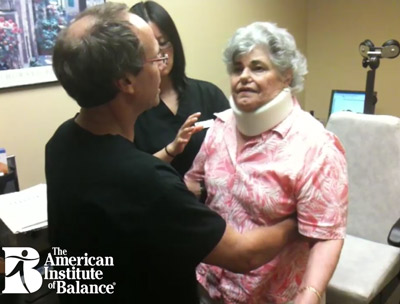
VIDEO- Conversion Disorders in the Balance Clinic
Published on: January 29, 2014
Patients with Dissociative or Somatoform disorders commonly referred to as Conversion Disorders are often seen in balance centers due to their motor control issues and hypersensitivities to motion, light, sound etc. Conversion disorder is classified as a psychiatric disorder and is usually seen in individuals with a long-standing history and well-documented personality disorders such as histrionic, obsessive compulsive, anxiety/panic and or depression. Numerous authors have suggested that these individuals may have experienced some form of psychologic trauma in their childhood and this is a manifestation of repressed memories.
At AIB we see approximately two-dozen patients each year who are referred with this diagnosis or provincial diagnosis pending vestibular findings. It is important to recognize, that these patients while challenging, are not malingering or feigning their illness or symptoms. Likewise, they often present with a variety of complaints and symptoms that sound “vestibular-like” or similar to a mal de Debarquement (MDDS) but all results are negative for an acute, active or non-compensated vestibulopathy. They may or may not experienced a precedent labyrinthine event with even just one debilitating episode of vertigo. Typically, they have had many examinations by many specialists at numerous facilities and carry their tests from doctor to doctor seeking an explanation or diagnosis. This category of somatoform disorder is much more complex than those patients presenting with Migraine Anxiety Related Dizziness (MARD) or Space and Motion Discomfort Syndrome (SMDS).
Case Study: In this video you will see a 70 year-old female who awoke one morning with uncontrollable seizure-like and hyper-reflexive behaviors. She has undergone extensive otologic and neurologic examination, all negative. She is referred to AIB by both ENT and Neurology with an expectation this is a Conversion Disorder variant termed psychogenic non-epileptic seizure (PNES). The cervical collar was one of a series of protocols to reduce the behaviors while in the process of examination and cognitive behavioral therapy (CBT).
With the initiation of CBT at her first visit and ongoing behavioral therapy and physical therapy, within a short period of a few weeks she had recovered and she and her husband were enjoying ballroom dance lessons. The patient once physically recovered continued with behavioral therapy to address the underlying psychological issues which had triggered the occurrence. Here are but a few recommendations regarding CBT with these patients provided in the literature:
- Avoid making the patient feel as if nothing is wrong with them.
- Reassure the patient that their symptoms are very real.
- This is triggered by subconscious stress and the response may cause such behaviors as nail biting, foot tapping, pacing etc.
- Physical therapy may be a viable management strategy as the patient recovers.
- They are not malingering and should not be confronted as if they are making this up.
References:
-
- Betts, T., Conversion Disorders. In Engel, J., Pedley, TA.,Aicardi, J., Epilepsy: A Comprehensive Textbook. Lippincott Williams & Wilkins, 2008
- Jacob, RG., Brandt, T., Furman, JM, Psychiatric aspects of dizziness and imbalance In (Eds) Bronstein,A., Brandt,T., Woollacott,MH., Nutt, JG. Arnold Publishing a division of Oxford University Press, London, 2004
- Sharpe,M., Walker, J., William, C., Stone, J., Cavanagh, J., et al. Guided self-help for functional )psychogenic) symptoms, Neurology 77, August 9, 2011
- Teasell, RW and Shapiro, AP, Misdiagnosis of conversion disorders. Am. J Phys Med Rehabil, 2002; 81:236-240